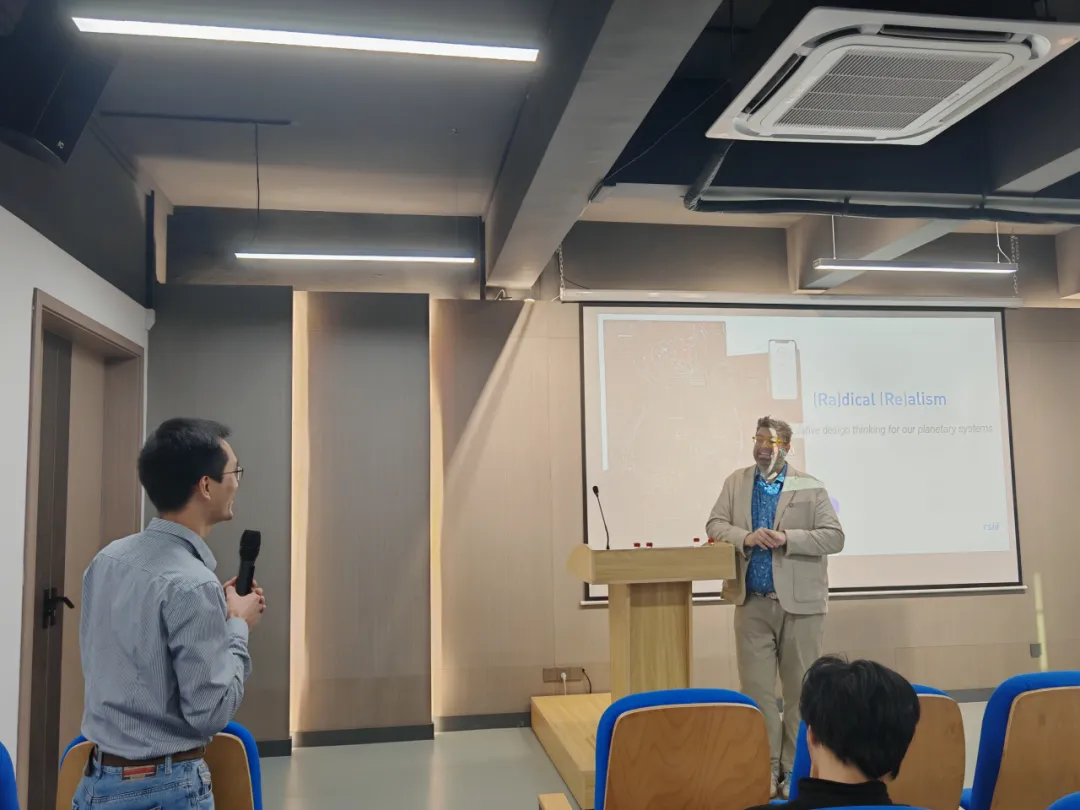At the invitation of our college, on the afternoon of December 11, Professor Robert Schmidt, Director of the Department of Architecture, School of Architecture and Civil Engineering, Loughborough University, UK, and member of the Low Carbon City and Building Science Committee, came to the 202 Lecture Hall of Building 4, Dongfeng Road Campus of our school to give a keynote lecture entitled "RaRe (Radical Realism) - Speculative Design Thinking for Critical Practice". The lecture was hosted by Huang Jianwen, Director of the Department of Architecture of our college, and young teachers, graduate students and undergraduates of the college attended the lecture.
In the lecture, Professor Schmidt systematically expounded on several key areas of architectural design. First, he focused on the issue of sustainability in architectural practice and proposed ways to reduce construction waste and carbon emissions through strategies such as resource recycling. Secondly, Professor Schmidt turned to the concept of humanistic design and introduced relevant architectural practice project cases with critical thinking, such as the design of the Whitley Health Center, and proposed the "Evocative Architecture Precedent Card" evaluation framework to measure the performance of architectural projects in humanistic design. Then, he introduced visual research methods such as "Visual Walks" and "Eye-tracking Studies", which focus on analyzing visual focus and visual sequence. Professor Schmidt emphasized that buildings with historical or cultural significance, unique features, rich textures and clever angles are more able to attract people's attention and stimulate their interest. Finally, Professor Schmidt explored the application prospects of artificial intelligence in architectural design, explaining how to use database development and design process optimization, and how to combine architectural design with public domain vocabulary to enhance the role of AI as a collaborator in speculative design.


During the interactive session, teachers and students of the college raised a number of questions, including how to establish a comprehensive and efficient resource recycling system, how to consider the large amount of waste generated in the construction industry during new construction, renovation, demolition and other stages, and how to effectively recycle and redevelop and utilize it. Professor Schmidt gave detailed answers to all of them, providing new ideas for research and teaching, which benefited teachers and students.
Professor Schmidt’s wonderful lecture and profound insights have brought valuable knowledge and inspiration to our teachers and students. We look forward to more such academic exchange activities between our two institutions in the future.

